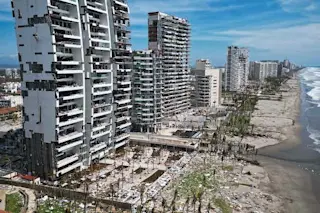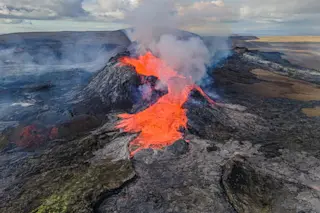Acapulco wasn’t prepared when Hurricane Otis struck as a powerful Category 5 storm on Oct. 25, 2023. The short notice as the storm rapidly intensified over the Pacific Ocean wasn’t the only problem – the Mexican resort city’s buildings weren’t designed to handle anything close to Otis’ 165 mph winds.
While Acapulco’s oceanfront high-rises were built to withstand the region’s powerful earthquakes, they had a weakness.
Since powerful hurricanes are rare in Acapulco, Mexico’s building codes didn’t require that their exterior materials be able to hold up to extreme winds. In fact, those materials were often kept light to help meet earthquake building standards.
Otis’ powerful winds ripped off exterior cladding and shattered windows, exposing bedrooms and offices to the wind and rain. The storm took dozens of lives and caused billions of dollars in damage.
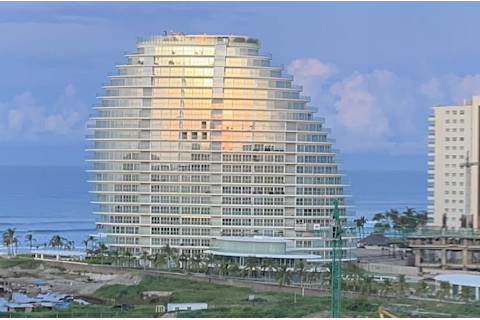
A US$130 million luxury condo building on the beach in Acapulco before Hurricane Otis struck on Oct. 25, 2023. (Credit: Hamid Arabzadeh, Ph.D., P.Eng.)
Hamid Arabzadeh, Ph.D., P.Eng.
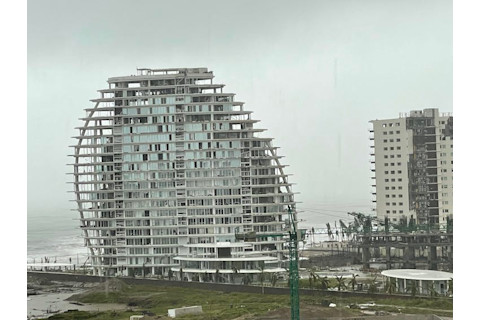
The same Acapulco condo tower after Hurricane Otis. (Credit: Hamid Arabzadeh, Ph.D., P.Eng.)
Hamid Arabzadeh, Ph.D., P.Eng.
I have worked on engineering strategies to enhance disaster resilience for over three decades and recently wrote a book, “The Blessings of Disaster,” about the gambles humans take with disaster risk and how to increase resilience. Otis provided a powerful example of one such gamble that exists when building codes rely on probabilities that certain hazards will occur based on recorded history, rather than considering the severe consequences of storms that can devastate entire cities.
The fatal flaw in building codes
Building codes typically provide “probabilistic-based” maps that specify wind speeds that engineers must consider when designing buildings.
The problem with that approach lies in the fact that “probabilities” are simply the odds that extreme events of a certain size will occur in the future, mostly calculated based on past occurrences. Some models may include additional considerations, but these are still typically anchored in known experience.
This is all good science. Nobody argues with that. It allows engineers to design structures in accordance with a consensus on what are deemed acceptable return periods for various hazards, referring to the likelihood of those disasters occurring. Return periods are a somewhat arbitrary assessment of what is a reasonable balance between minimizing risk and keeping building costs reasonable.
However, probabilistic maps only capture the odds of the hazard occurring. A probabilistic map might specify a wind speed to consider for design, irrespective of whether that given location is a small town with a few hotels or a megapolis with high-rises and complex urban infrastructure. In other words, probabilistic maps do not consider the consequences when an extreme hazard exceeds the specified value and “all hell breaks loose.”
How probability left Acapulco exposed
According to the Mexican building code, hotels, condos and other commercial and office buildings in Acapulco must be designed to resist 88 mph winds, corresponding to the strongest wind likely to occur on average once every 50 years there. That’s a Category 1 storm.
A 200-year return period for wind is used for essential facilities, such as hospital and school buildings, corresponding to 118 mph winds. But over a building’s life span of, say, 50 years, that still leaves a 22% change that winds exceeding 118 mph will occur (yes, the world of statistics is that sneaky).
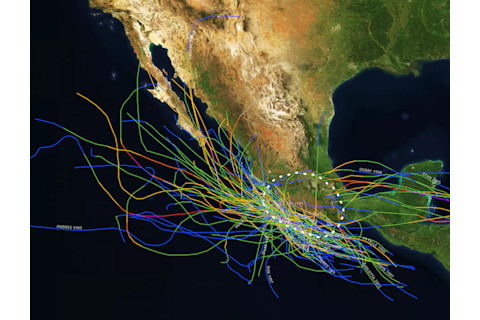
Mexico’s hurricane history in storm tracks. (Credit:NOAA)
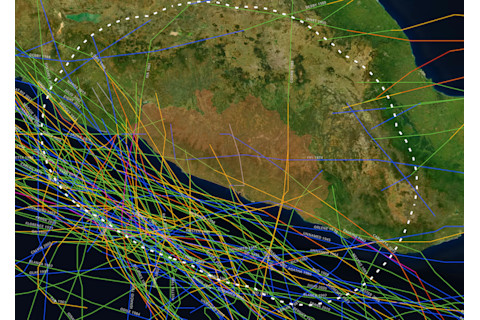
A century of hurricane storm tracks near Acapulco show several offshore storms that brought strong winds and rain to the city, but few direct landfalls. Acapulco Bay is in the center of the map on the coast. Red, pink and purple lines are categories 3, 4 and 5, respectively. (Credit: NOAA)
NOAA
The probability wind maps for both return periods show Acapulco experiences lower average wind speeds than much of the 400 miles of Mexican coast north of the city. Yet, Acapulco is a major city, with a metropolitan population of over 1 million. It also has more than 50 buildings taller than 20 stories, according to the SkyscraperPage, a database of skyscrapers, and it is the only city with buildings that tall along that stretch of the Pacific coast.
Designing for a 50-year return period in this case is questionable, as it implies a near 100% chance of encountering wind exceeding this design value for a building with a 50-year life span or greater.
Florida faces similiar challenges
The shortcomings of probabilistic-based maps that specify wind speeds have also been observed in the United States. For example, new buildings along most of Florida’s coast must be able to resist 140 mph winds or greater, but there are a few exceptions. One is the Big Bend area where Hurricane Idalia made landfall in 2023. Its design wind speed is about 120 mph instead.
A 2023 update to the Florida Building Code raised the minimum wind speed to approximately 140 mph in Mexico Beach, the Panhandle town that was devastated by Hurricane Michael in 2018. The Big Bend exception may be the next one to be eliminated.
Acapulco’s earthquake design weakness
A saving grace for Acapulco is that it is located in one of Mexico’s most active seismic risk zones – for example, a magnitude 7 earthquake struck nearby in 2021. As a result, the lateral-load-resisting structural systems in tall buildings there are designed to resist seismic forces that are generally larger than hurricane forces.
However, a drawback is that the larger the mass of a building, the larger the seismic forces the building must be designed to resist. Consequently, light materials were typically used for the cladding – the exterior surface of the building that protects it against the weather – because that translates into lower seismic forces. This light cladding was not able to withstand hurricane-force winds.
Had the cladding not failed, the full wind forces would have been transferred to the structural system, and the buildings would have survived with little or no damage.
A ‘good engineering approach’ to hazards
A better building code could go one step beyond “good science” probabilistic maps and adopt a “good engineering approach” by taking stock of the consequences of extreme events occurring, not just the odds that they will.
In Florida, the incremental cost of designing for wind speeds of 140 mph rather than 120 mph is marginal compared to total building cost, given that cladding able to resist more than 140 mph is already used in nearly all of the state. In Acapulco, with the spine of buildings already able to resist earthquake forces much larger than hurricane forces, designing cladding that can withstand stronger hurricane-level forces is likely to be an even smaller percentage of total project cost.
Someday, the way that design codes deal with extreme events such as hurricanes, not only in Mexico, will hopefully evolve to more broadly account for what is at risk at the urban scale. Unfortunately, as I explain in “The Blessings of Disaster,” we will see more extreme disasters before society truly becomes disaster resilient.
Michel Bruneau is a Professor of Engineering at the University at Buffalo. This article is republished from The Conversation under a Creative Commons license. Read the original article.


